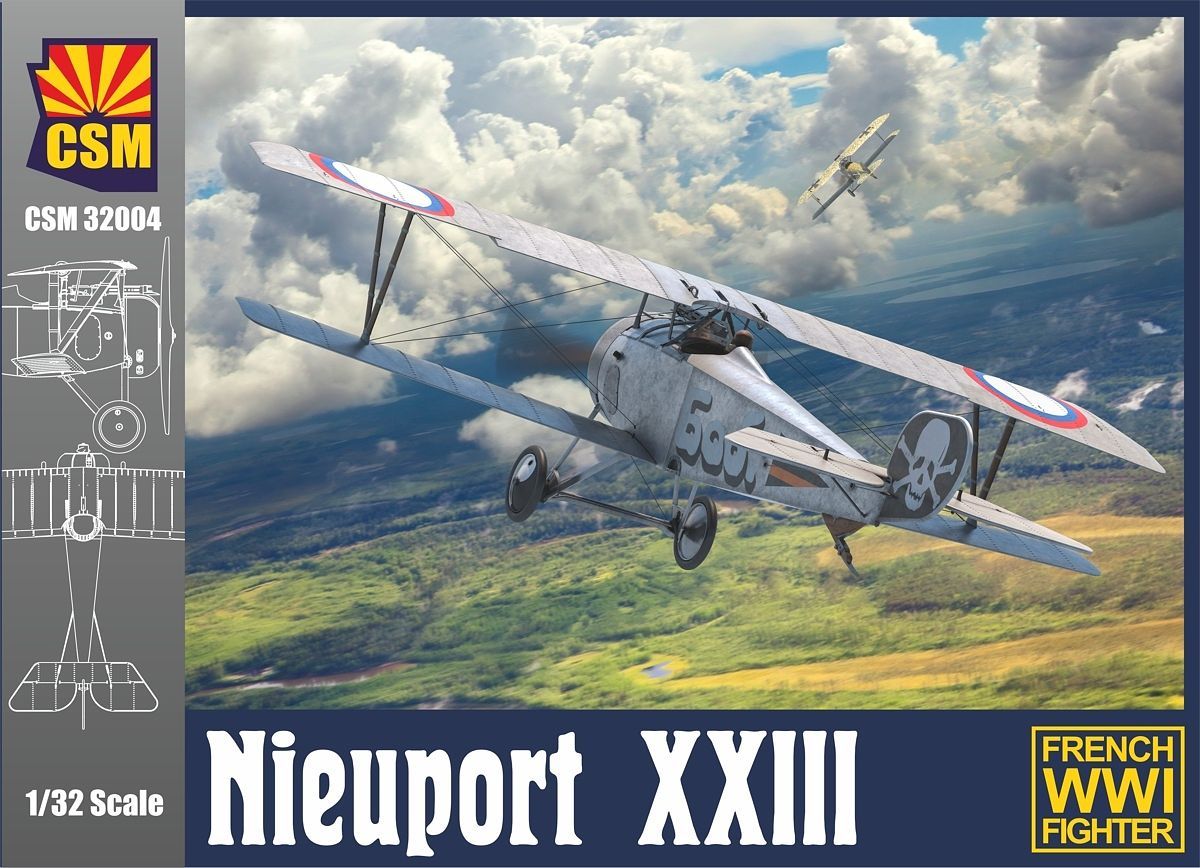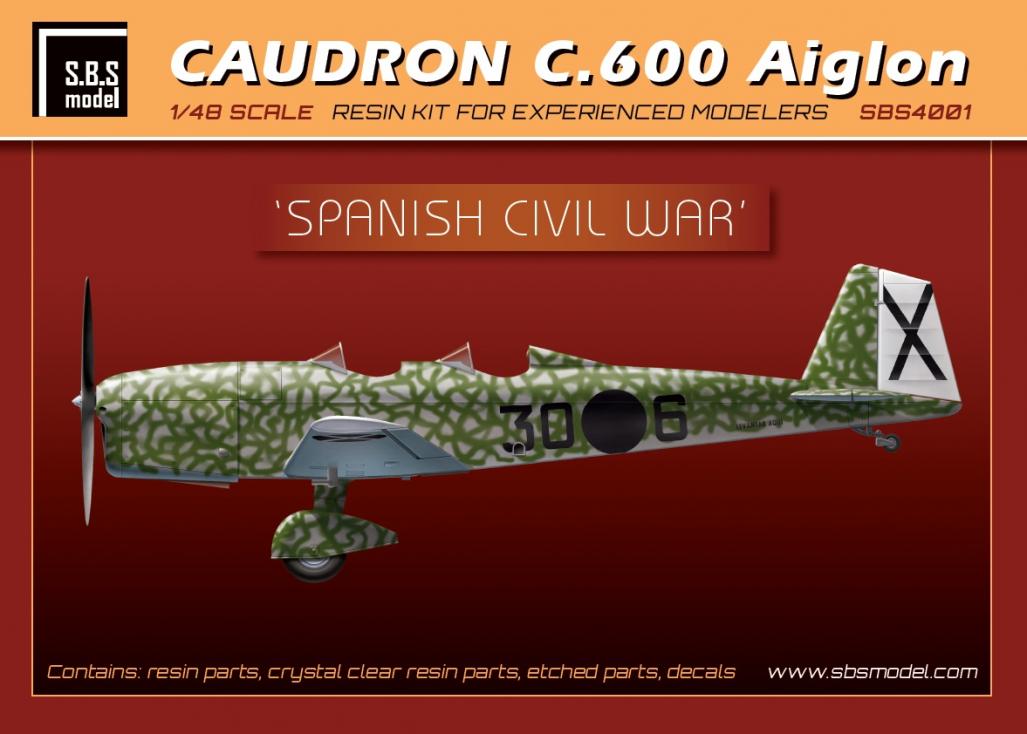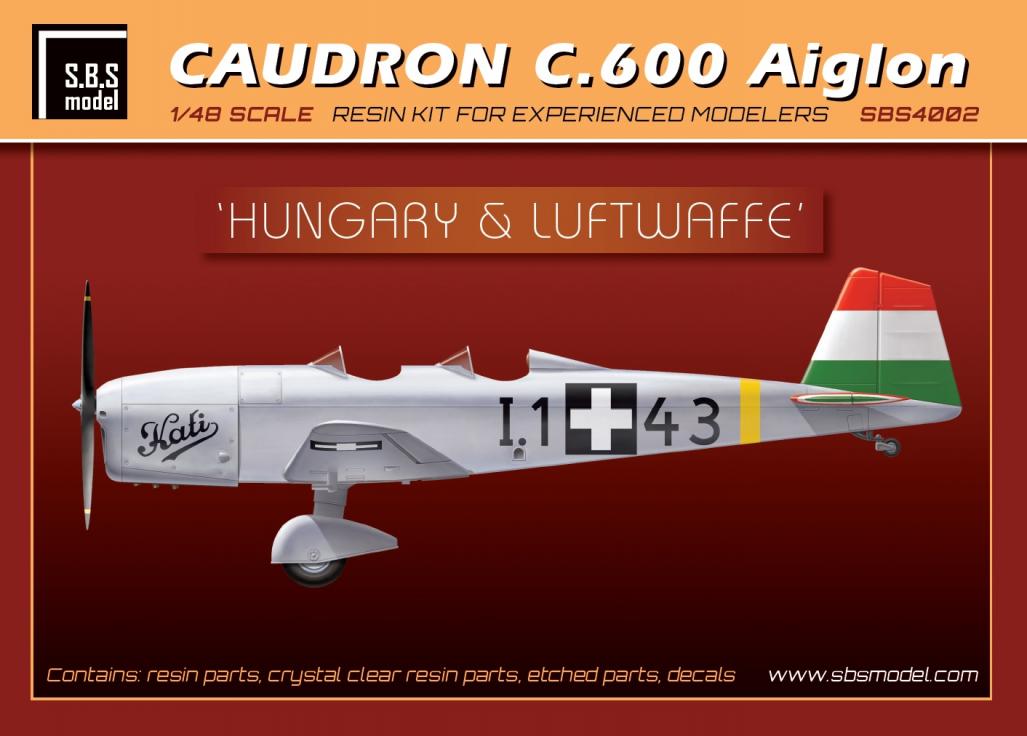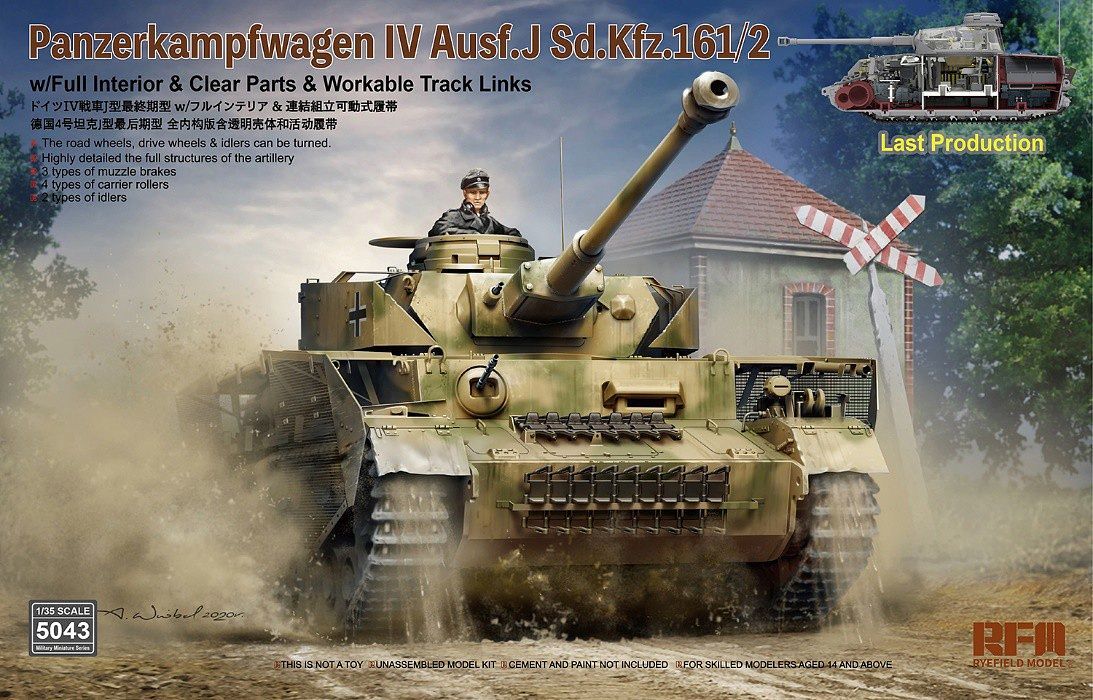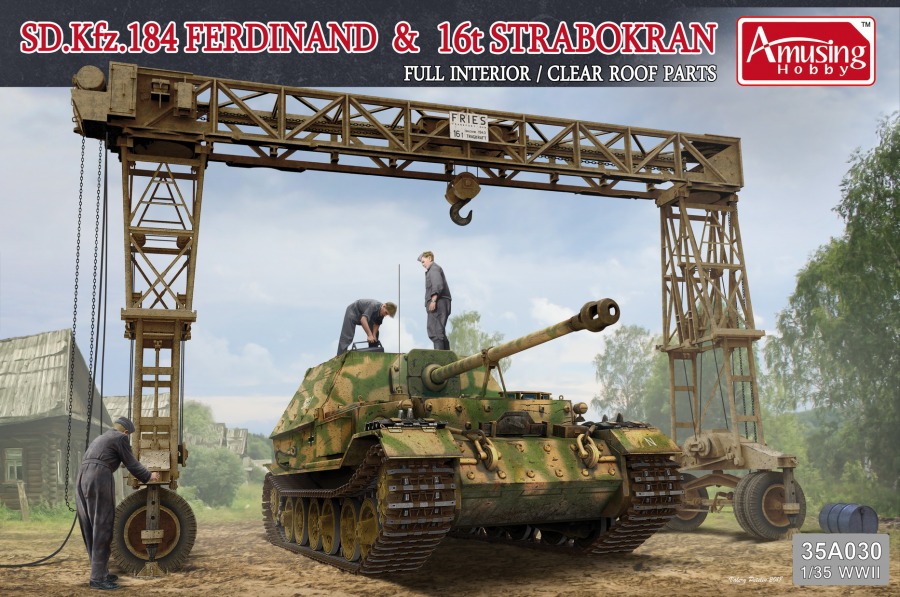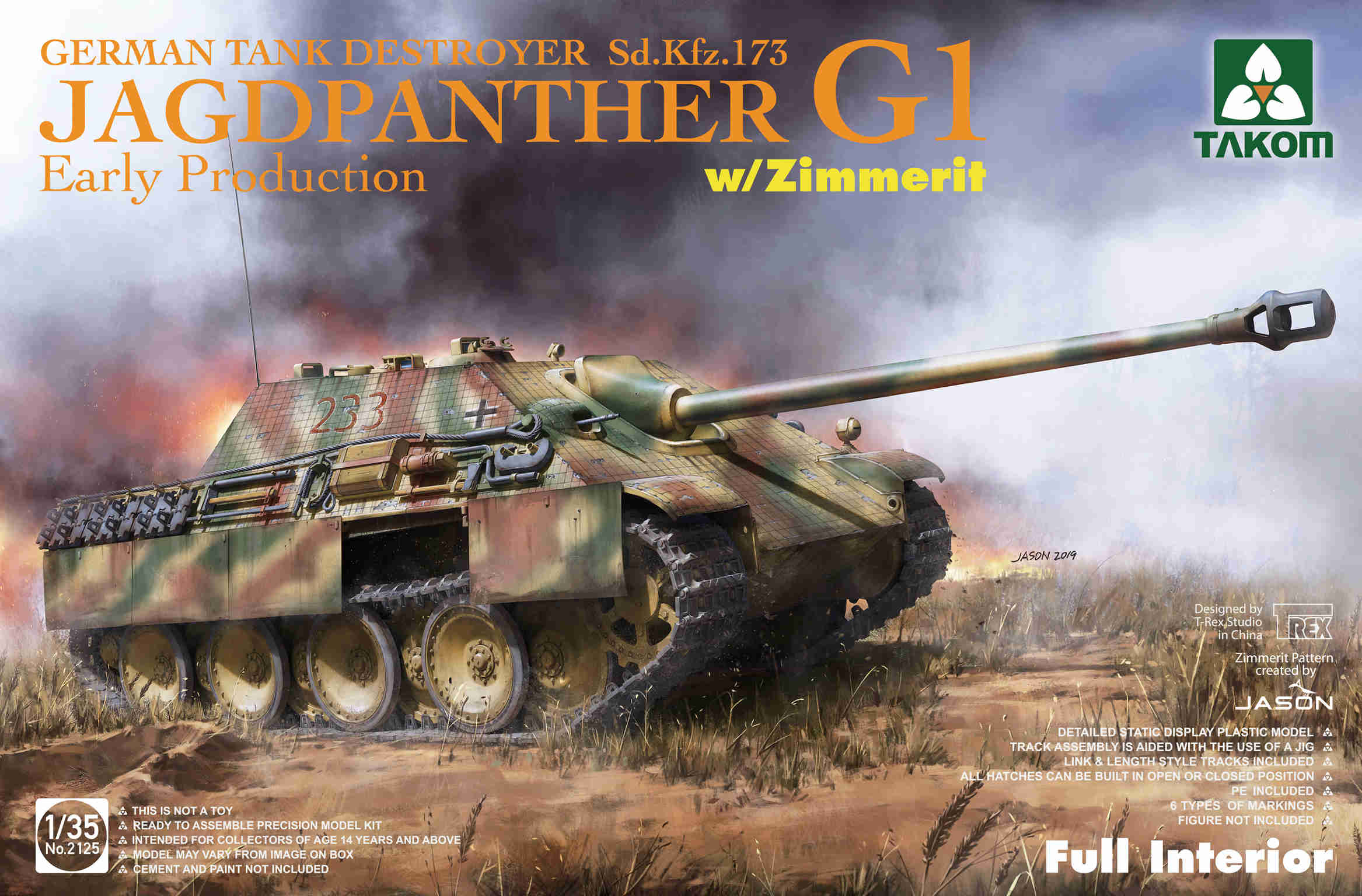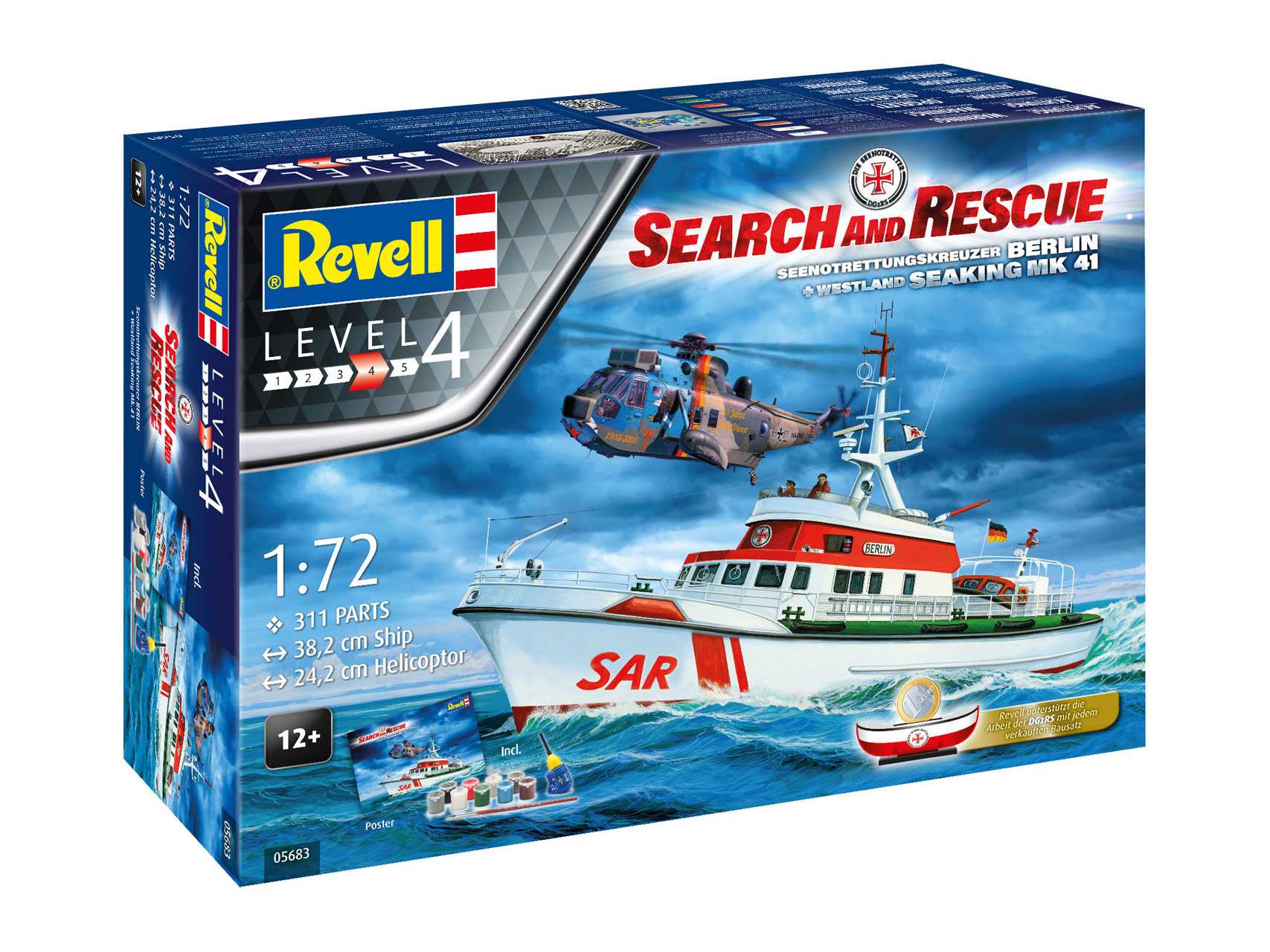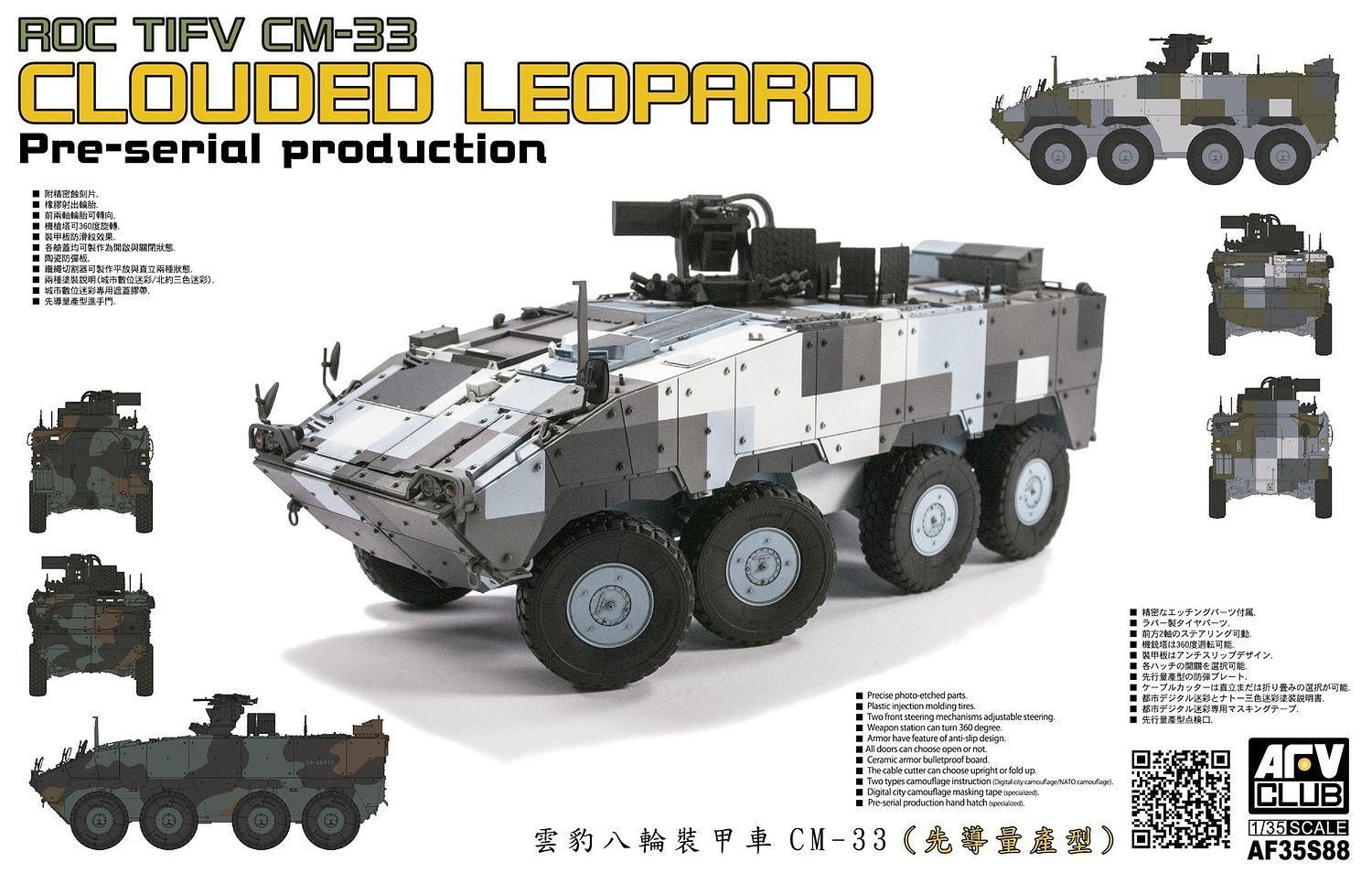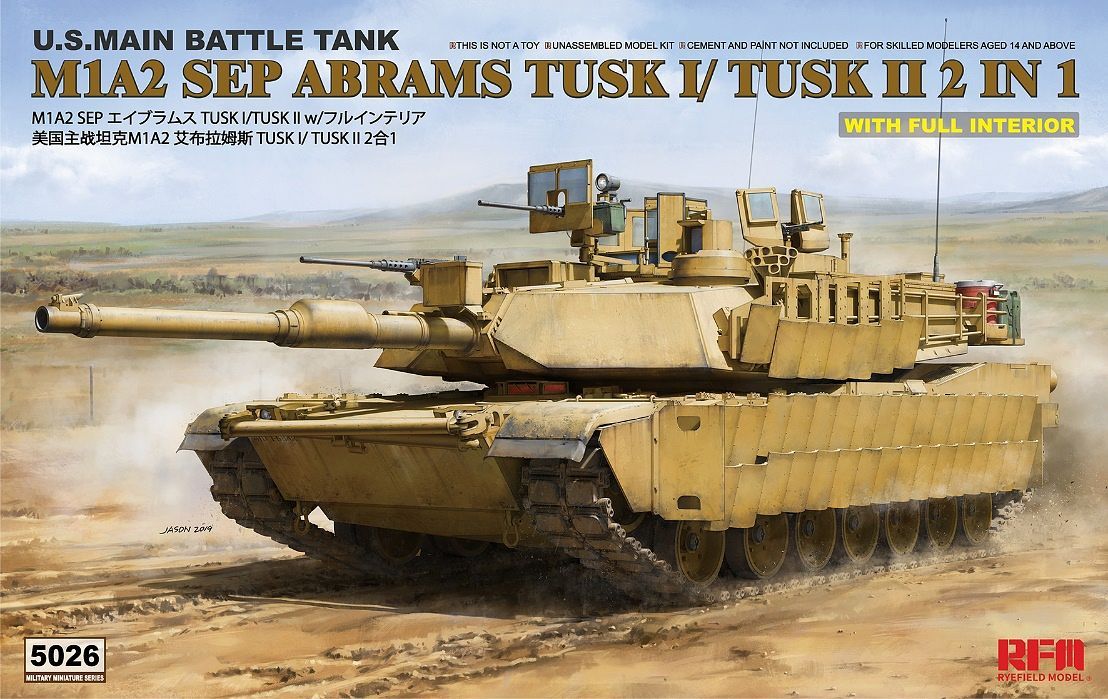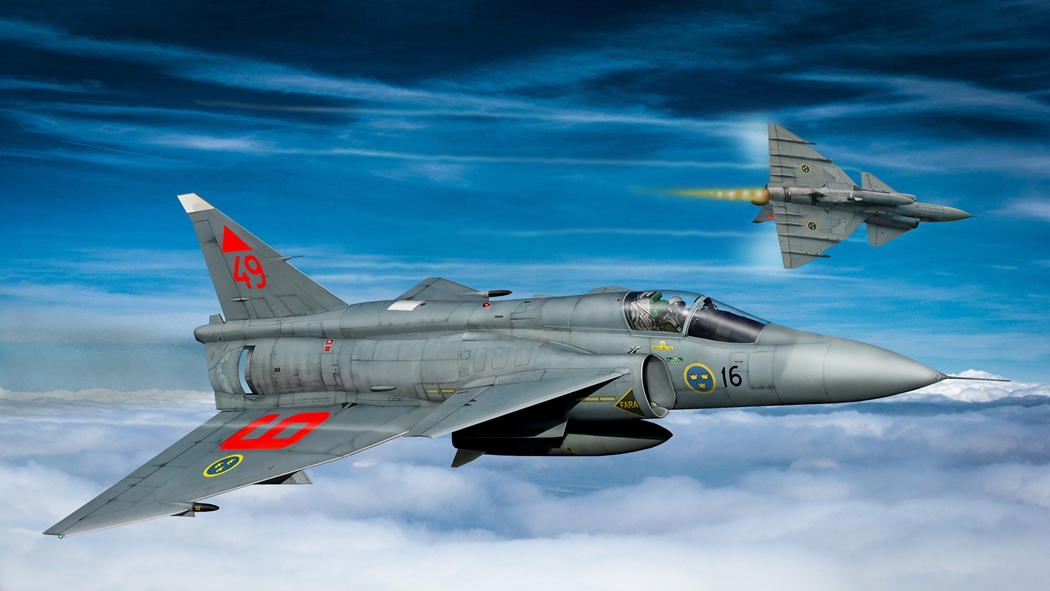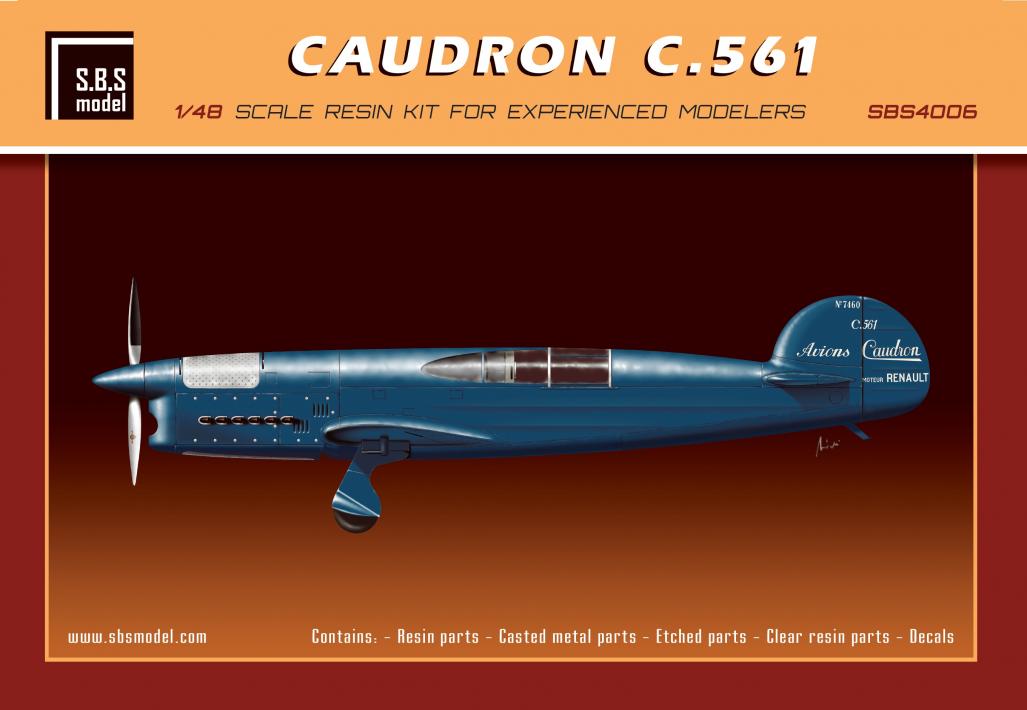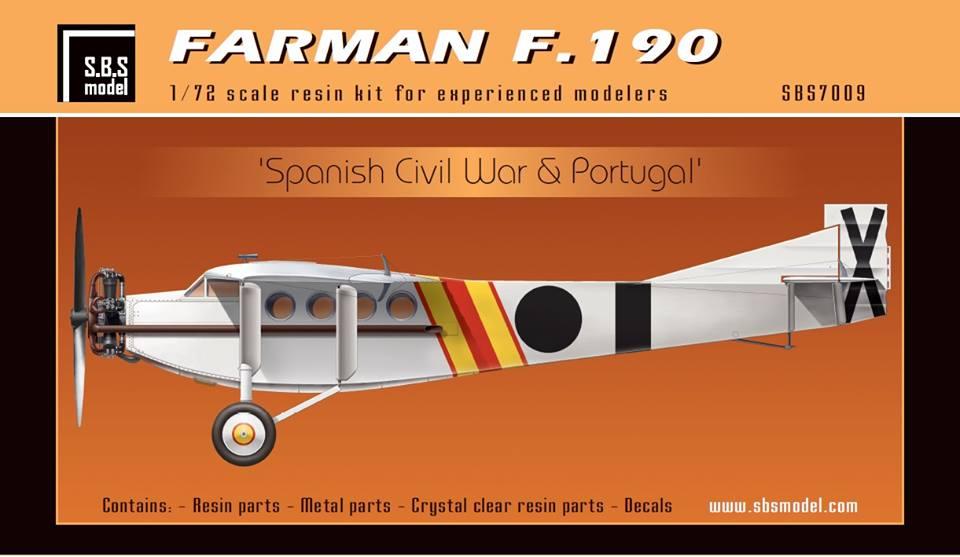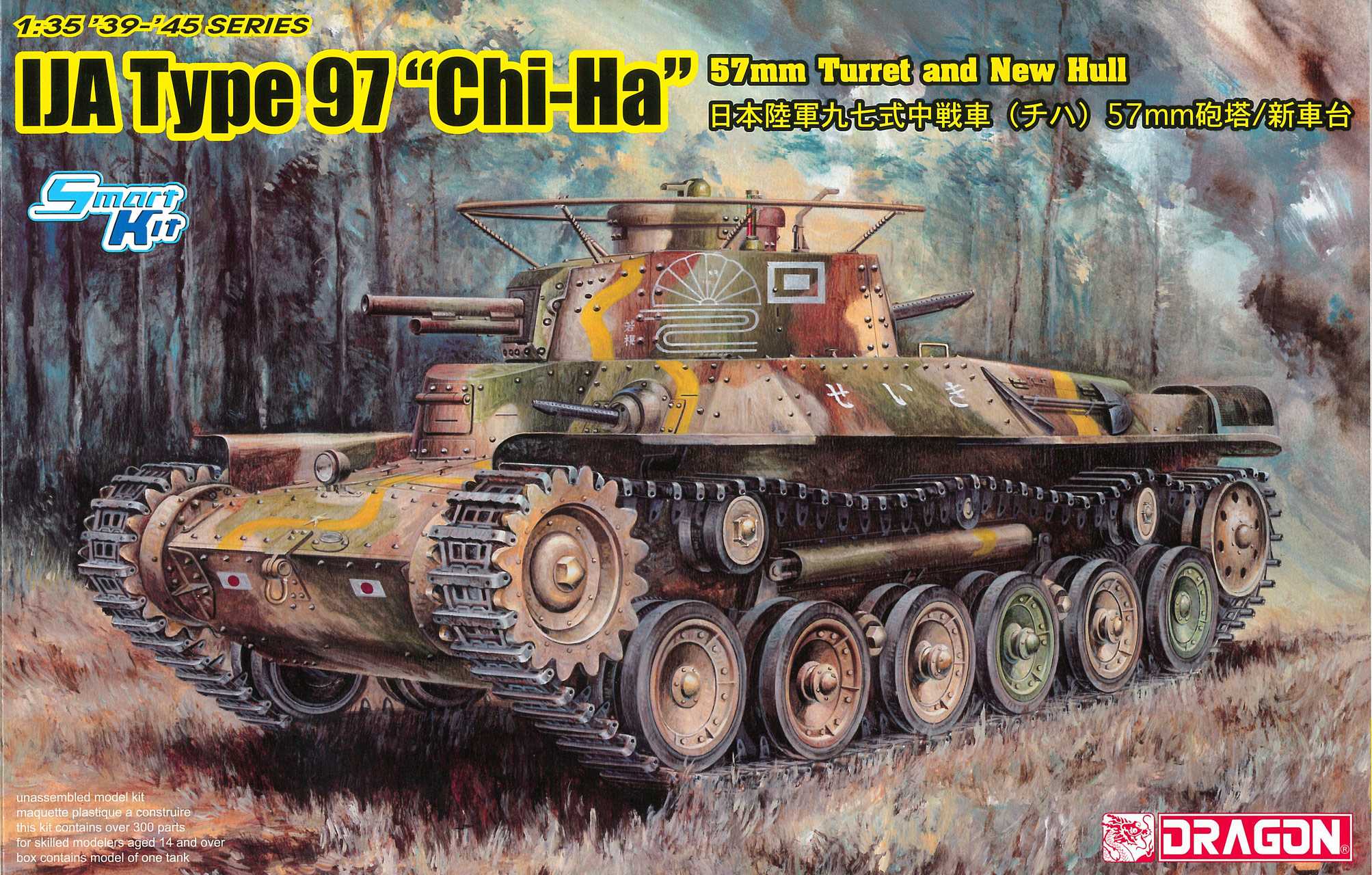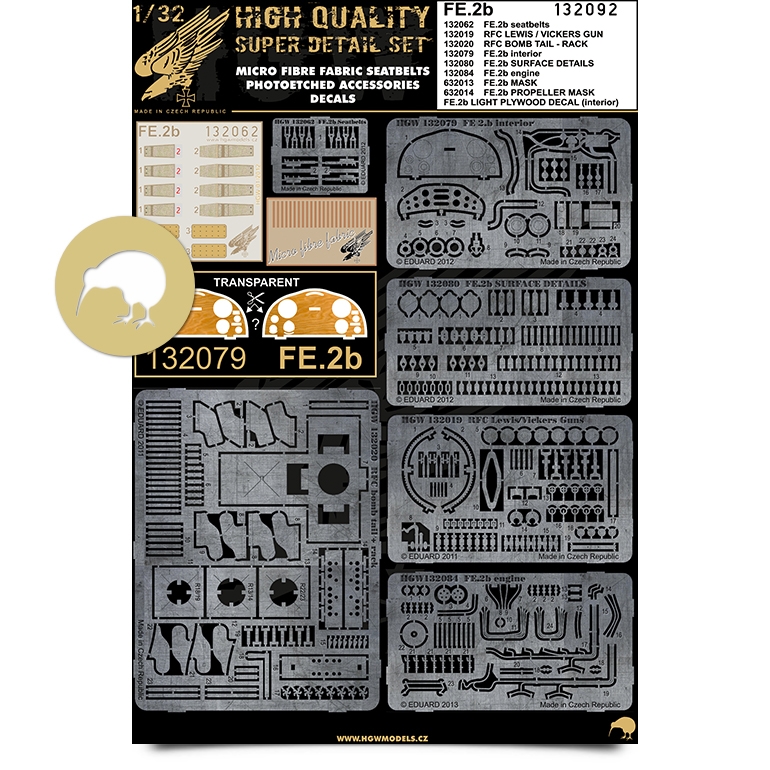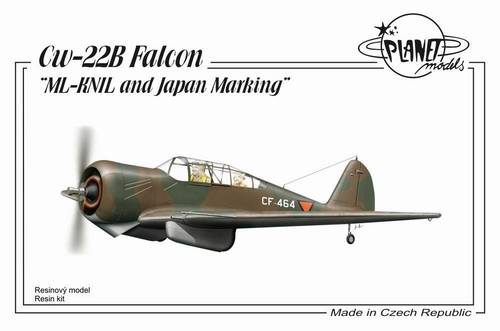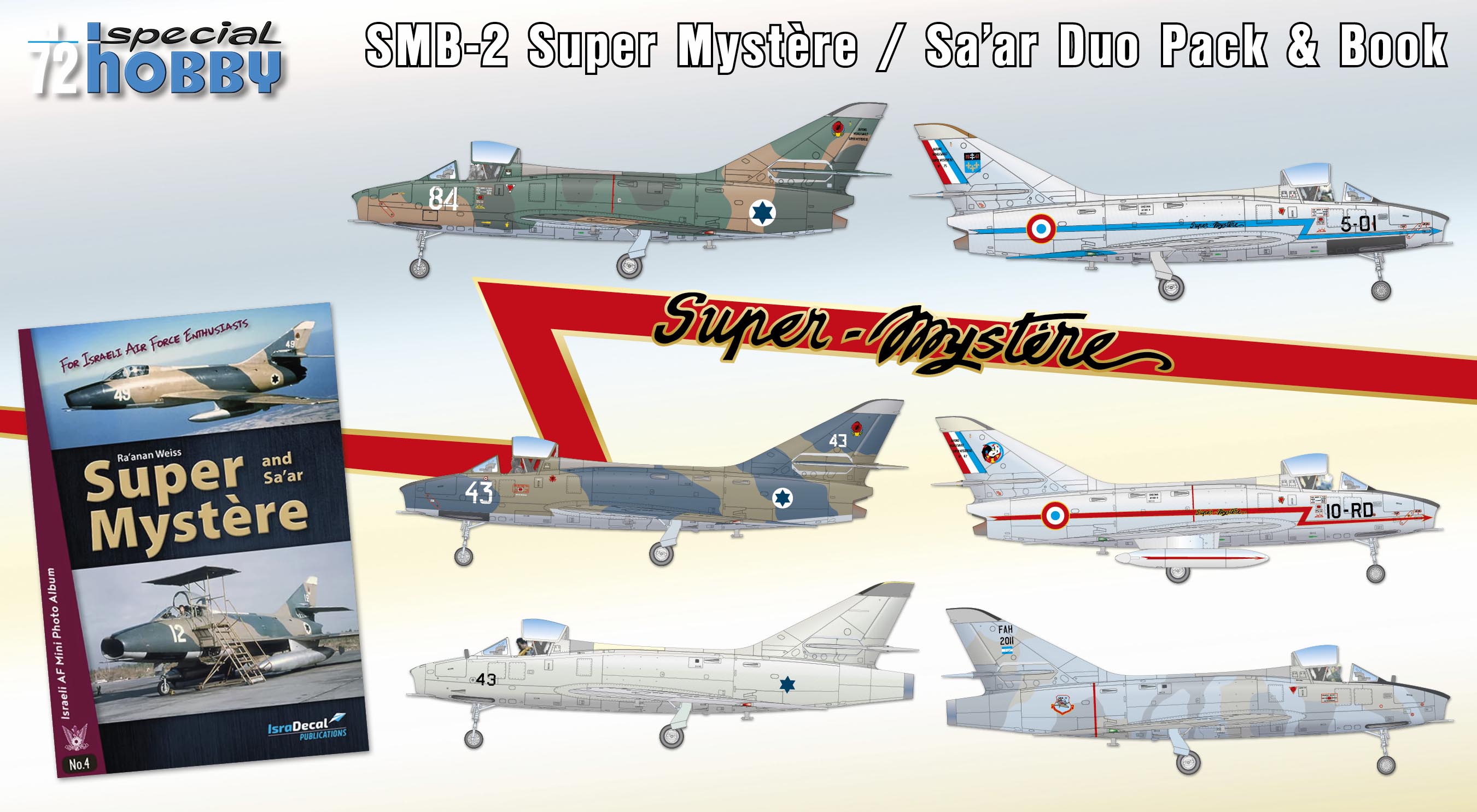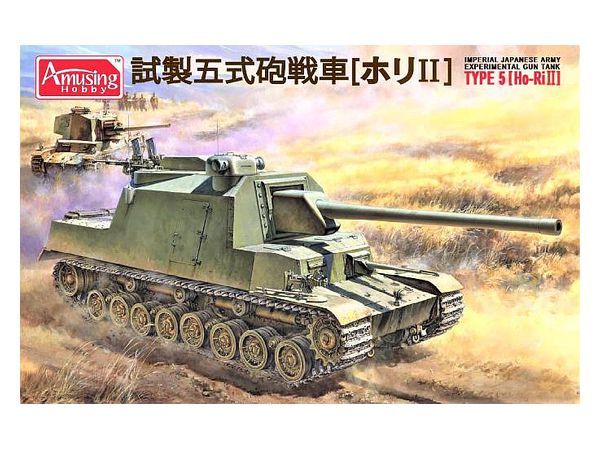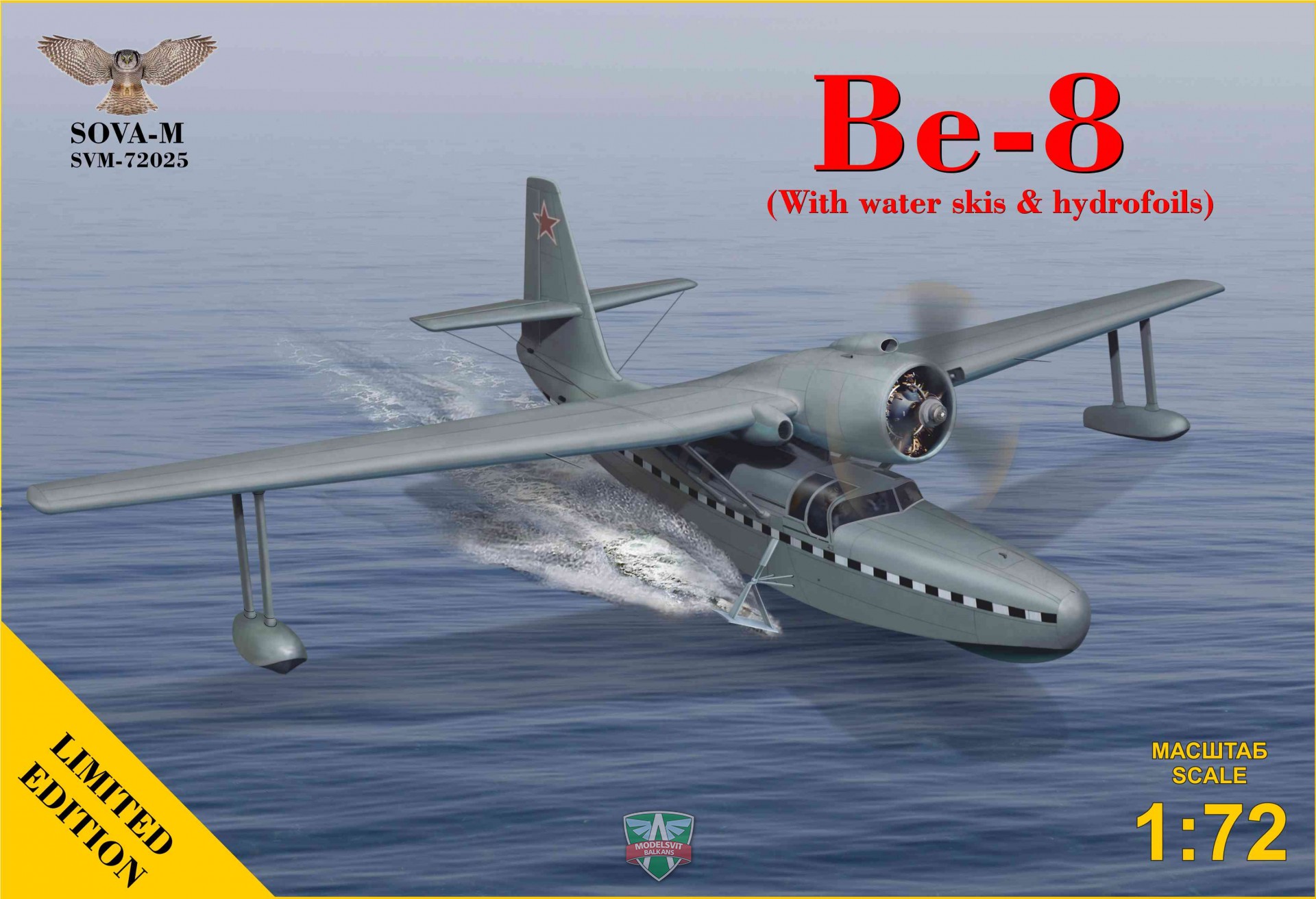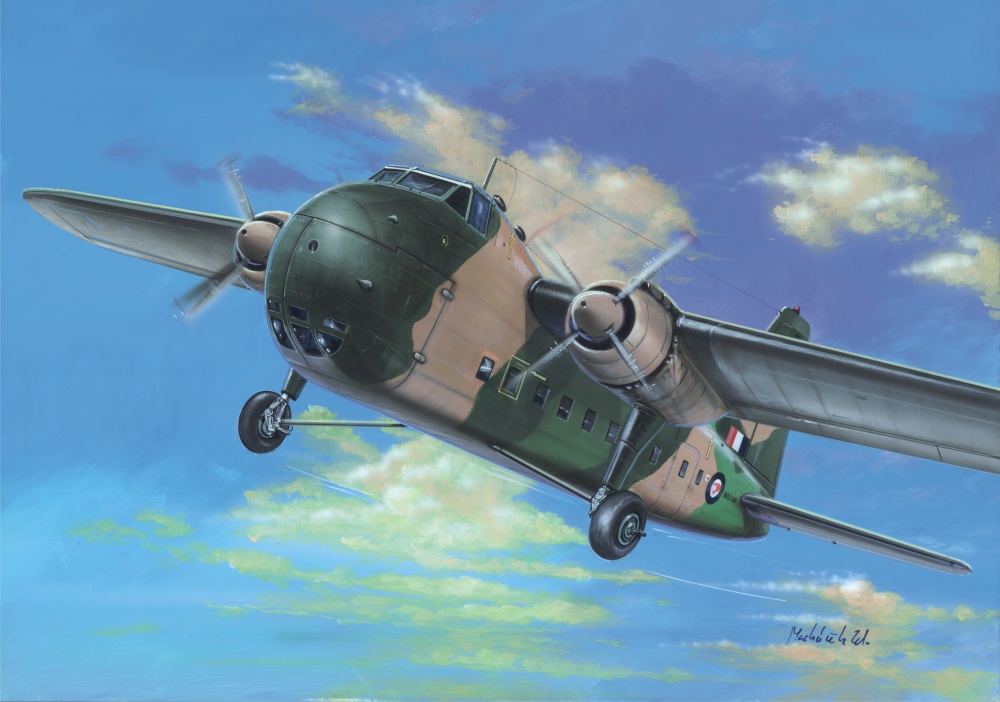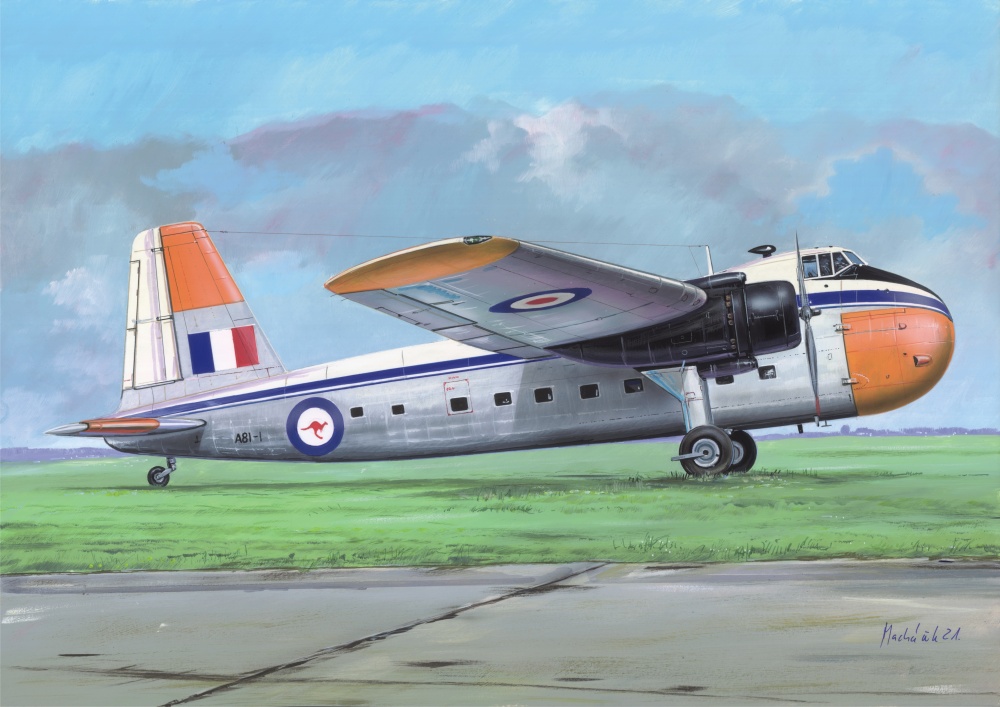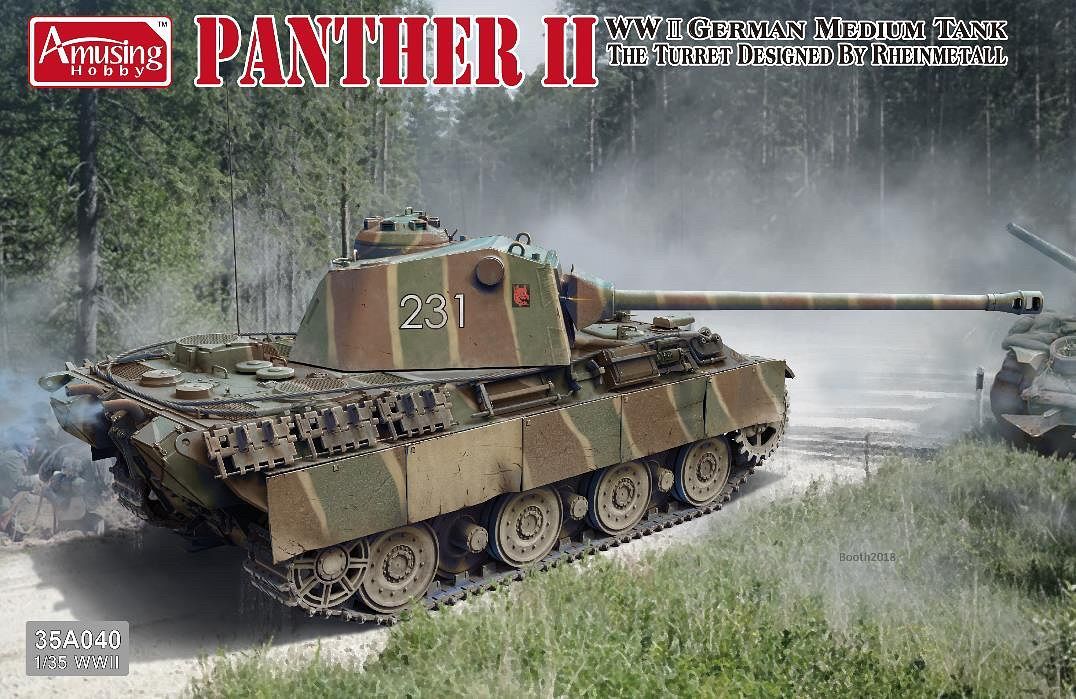Modely
Celkem 722 produktů
1/32 Fokker Dr.I Triplane "Red Baron" includes a 1/10 resin bust. More than one hundred years ago, Europe was in a state of devastation. Farms and pastures were ruined by shell craters and muddy water. Laughter in bars was replaced by people’s sobbing. Bank managers became soldiers hiding in the trenches and primary school teachers plunged bayonets into others’ chests. Everyone on the battlefield was surrounded by the angriest roars and the most vicious curses. But even in the desperate twilight, there was one gem shining brilliantly. Its brightness was so dazzling that it’s still remembered by the once warring parties. Manfred von Richthofen, the cavalry officer who learn to fly in 1915, became the top-scoring ace of World War I by winning 80 air combat victories in less than two years. His iconic red aircraft was well known to both warring parties. The Germans rejoiced in it, and the Allies were convinced by his exquisite combat skills and precious chivalry. As a legend, his death was dramatic because of the bizarre possibilities. The story of the “Red Baron” has gone across time and beyond hatred and is still being told today. The QS-002s Fokker Dr.I Triplane “Red Baron” is a limited edition product based on the MENG QS-002 Fokker Dr.I Triplane kit. This kit includes a 1/10 resin bust of the “Red Baron” Manfred von Richthofen and a Fokker Dr.I Triplane kit. This Manfred von Richthofen bust features calm and confident facial expressions. The figure wears a leather flight jacket over the Imperial German Army uniform. He wears an M1910 Officer Visor Cap on his head and a Blue Max medal on the neckline. This is the most well-known image of the “Red Baron”. This product is limited to 1,000 kits.
1/32 Fokker Dr.I Triplane "Red Baron" includes a 1/10 resin bust. More than one hundred years ago, Europe was in a state of devastation. Farms and pastures were ruined by shell craters and muddy water. Laughter in bars was replaced by people’s sobbing. Bank managers became soldiers hiding in the trenches and primary school teachers plunged bayonets into others’ chests. Everyone on the battlefield was surrounded by the angriest roars and the most vicious curses. But even in the desperate twilight, there was one gem shining brilliantly. Its brightness was so dazzling that it’s still remembered by the once warring parties. Manfred von Richthofen, the cavalry officer who learn to fly in 1915, became the top-scoring ace of World War I by winning 80 air combat victories in less than two years. His iconic red aircraft was well known to both warring parties. The Germans rejoiced in it, and the Allies were convinced by his exquisite combat skills and precious chivalry. As a legend, his death was dramatic because of the bizarre possibilities. The story of the “Red Baron” has gone across time and beyond hatred and is still being told today. The QS-002s Fokker Dr.I Triplane “Red Baron” is a limited edition product based on the MENG QS-002 Fokker Dr.I Triplane kit. This kit includes a 1/10 resin bust of the “Red Baron” Manfred von Richthofen and a Fokker Dr.I Triplane kit. This Manfred von Richthofen bust features calm and confident facial expressions. The figure wears a leather flight jacket over the Imperial German Army uniform. He wears an M1910 Officer Visor Cap on his head and a Blue Max medal on the neckline. This is the most well-known image of the “Red Baron”. This product is limited to 1,000 kits.
1/32 Nieuport XXIII Belgium, Russia. Was largely the same as the definitive XVII, differing mainly in the use of a different machine gun synchronizer. Nieuport XXIIIs were operated by both French and British squadrons alongside Nieuport XVIIs until their replacement by Nieuport 24s. CSM 1/32 plastic injection kit -5 plastic frets -Instruction in colour -Film for windscreen -PhotoEtch -Decals for 4 markings printed by Cartograf
1/32 Nieuport XXIII Belgium, Russia. Was largely the same as the definitive XVII, differing mainly in the use of a different machine gun synchronizer. Nieuport XXIIIs were operated by both French and British squadrons alongside Nieuport XVIIs until their replacement by Nieuport 24s. CSM 1/32 plastic injection kit -5 plastic frets -Instruction in colour -Film for windscreen -PhotoEtch -Decals for 4 markings printed by Cartograf
1/35 Panzer IV Ausf.J last production - full interior. The No, IV Type J tank was the final version of the No. IV tank series, and was simplified from previous versions to improve productivity. The biggest change from the H-type is the removal of the turret rotation motor and auxiliary engine for power generation; this allowed the turret to be turned manually. By removing these items and adding a fuel tank, the tank's cruising range was increased from 210km to 320km on level ground. This kit from Rye Field Model has a newly molded full interior! It also has clear parts for the turret and upper hull, in addition to the normal parts. The tracks are of the linkable assembly type, and the suspension is movable; it comes with three types of muzzle brakes, two types of guide wheels and four types of upper wheels. Photo-etched parts and decals for three versions are also included. [Includes]: Photo-etched parts, decals for 3 versions
1/35 Panzer IV Ausf.J last production - full interior. The No, IV Type J tank was the final version of the No. IV tank series, and was simplified from previous versions to improve productivity. The biggest change from the H-type is the removal of the turret rotation motor and auxiliary engine for power generation; this allowed the turret to be turned manually. By removing these items and adding a fuel tank, the tank's cruising range was increased from 210km to 320km on level ground. This kit from Rye Field Model has a newly molded full interior! It also has clear parts for the turret and upper hull, in addition to the normal parts. The tracks are of the linkable assembly type, and the suspension is movable; it comes with three types of muzzle brakes, two types of guide wheels and four types of upper wheels. Photo-etched parts and decals for three versions are also included. [Includes]: Photo-etched parts, decals for 3 versions
1/35 Sd.Kfz.184 Ferdinand & 16t Strabokran. DESCRIPTION This is an injection-plastic military vehicle model kit. From Amusing Hobby comes a 2-in-1 kit of the Ferdinand Jagdpanzer Sd.Kfz. 184 and 16t Strabokran! The characteristic feature of the Ferdinand was that it was generated by two gasoline engines and driven by an electric motor. By using a motor as the driving unit, no transmission was required. In the past, this vehicle was said to have a lot of breakdowns for this reason, but some recent documents have reported that there were fewer breakdowns than some vehicles equipped with transmissions. On the Eastern Front, the Ferdinand's appearance had a great impact. Strabokrans are gate-type mobile cranes used by German field maintenance teams during tank maintenance and repairs. About 100 units were manufactured and used in German armored divisions and heavy tank battalions. Kit features: The Ferdinand's interior layout can be enjoyed even after completion thanks to the included transparent parts. The kit recreates the precise details of the Strabokran, and it can assembled in its working state. [Mold Color]: Tan, brown [Includes]: Clear parts, photo-etched parts Release Date:Sep 2019 Item Size/Weight:39.8cm x 26.3cm x 19.5cm / 1680g
1/35 Sd.Kfz.184 Ferdinand & 16t Strabokran. DESCRIPTION This is an injection-plastic military vehicle model kit. From Amusing Hobby comes a 2-in-1 kit of the Ferdinand Jagdpanzer Sd.Kfz. 184 and 16t Strabokran! The characteristic feature of the Ferdinand was that it was generated by two gasoline engines and driven by an electric motor. By using a motor as the driving unit, no transmission was required. In the past, this vehicle was said to have a lot of breakdowns for this reason, but some recent documents have reported that there were fewer breakdowns than some vehicles equipped with transmissions. On the Eastern Front, the Ferdinand's appearance had a great impact. Strabokrans are gate-type mobile cranes used by German field maintenance teams during tank maintenance and repairs. About 100 units were manufactured and used in German armored divisions and heavy tank battalions. Kit features: The Ferdinand's interior layout can be enjoyed even after completion thanks to the included transparent parts. The kit recreates the precise details of the Strabokran, and it can assembled in its working state. [Mold Color]: Tan, brown [Includes]: Clear parts, photo-etched parts Release Date:Sep 2019 Item Size/Weight:39.8cm x 26.3cm x 19.5cm / 1680g
1/35 Sd.Kfz. 173 Pz.Jg. Jagdpanther. The Panzerjäger Panther Sd.Kfz. 173, or Jagdpanther, was a heavy tank destroyer based on the chassis of the Panzer V Panther and was armed with the same long-barreled 8.8 cm gun as the Tiger II or ‘King Tiger’, and a single 7.92 mm MG-34 machine gun in the front glacis plate for local defense. The Jagdpanther had a good power-to-weight ratio and a powerful main gun, which enabled it to destroy any Allied tank. Based on the existing Panther chassis, the vehicle did not suffer too many mechanical problems, and had an upgraded transmission and final drive to counter the Panther's main weakness. The Jagdpanther was powered by the 700hp Maybach HL230 P30 V-12 petrol engine and a 7 speed forward, 1-speed reverse transmission system with a maximum speed of 46 km/h (28.6 mph) and a range of about 200 kilometers (99 miles). It was manned by a crew of five: a driver, radio-operator, commander, gunner and a loader. Two main variants can be distinguished, the earlier (1944 model) G1 with a small internally-bolted main gun mantlet and a modified Panther A engine deck, and the later (1945 model) G2 with a larger, externally-bolted mantlet and a modified Panther G engine deck, though late G1s also had a larger mantlet. Early Jagdpanthers had two vision openings for the driver, whereas late versions had only one. The main gun originally had a monobloc gun barrel, but later versions were equipped with the PaK 43/4 gun with a two-part barrel. Early G1s (to September 1944) were given a distinctive pattern of Zimmerit anti-magnetic mine coating.
1/35 Sd.Kfz. 173 Pz.Jg. Jagdpanther. The Panzerjäger Panther Sd.Kfz. 173, or Jagdpanther, was a heavy tank destroyer based on the chassis of the Panzer V Panther and was armed with the same long-barreled 8.8 cm gun as the Tiger II or ‘King Tiger’, and a single 7.92 mm MG-34 machine gun in the front glacis plate for local defense. The Jagdpanther had a good power-to-weight ratio and a powerful main gun, which enabled it to destroy any Allied tank. Based on the existing Panther chassis, the vehicle did not suffer too many mechanical problems, and had an upgraded transmission and final drive to counter the Panther's main weakness. The Jagdpanther was powered by the 700hp Maybach HL230 P30 V-12 petrol engine and a 7 speed forward, 1-speed reverse transmission system with a maximum speed of 46 km/h (28.6 mph) and a range of about 200 kilometers (99 miles). It was manned by a crew of five: a driver, radio-operator, commander, gunner and a loader. Two main variants can be distinguished, the earlier (1944 model) G1 with a small internally-bolted main gun mantlet and a modified Panther A engine deck, and the later (1945 model) G2 with a larger, externally-bolted mantlet and a modified Panther G engine deck, though late G1s also had a larger mantlet. Early Jagdpanthers had two vision openings for the driver, whereas late versions had only one. The main gun originally had a monobloc gun barrel, but later versions were equipped with the PaK 43/4 gun with a two-part barrel. Early G1s (to September 1944) were given a distinctive pattern of Zimmerit anti-magnetic mine coating.
Gift-Set SAR 05683 - DGzRS Arkona + Westland Sea King Mk 41 (1:72). Dárková sada ke slepení. Balení obsahuje: 311 dílků ke slepení, lepidlo, štětec, barvičky, plakát a obtisky. Informace o modelu: Už celá desetiletí byly záchranné námořní čluny organizace Deutsche Gesellschaft zur Rettung Schiffbrüchiger (DGzRS) a vrtulníky Sea King německého námořnictva součástí záchranného systému Search and Rescue (SAR) operujícího za jakéhokoliv počasí ve vodách Severního a Baltského moře. Už od jejího založení před 150 lety je práce DGzRS financována výhradně z darovaných prostředků. • Podoba člunu "Berlin" z roku 1985 (z doby uvedení do provozu) • Malý záchranný člun na zádi • Sea King: Obtisky "45 let ve službě u SAR", 2003 • Pohyblivý hlavní a ocasní rotor Obsah balení 2 plastové modely (nesestavené), návod na sestavení, obtisky, barvy (Revell Aqua Color), štětce, lepidlo (Revell Contacta Professional Mini), provázek, plakát Detaily modelu: Měřítko: 1:72 Počet dílů: 311 Obtížnost: 4 Doporučeno pro děti od 12 let. Upozornění: Nebezpečí udušení! Výrobek obsahuje malé části. NEVHODNÉ PRO DĚTI DO 3 LET! Akrylová barva pro modeláře Revell Aqua Color (5 ml) Návod na použití: Vodou ředitelná akrylová barva. Před použitím barvu dobře promíchejte. Nanášejte štětcem, nebo stříkáním na suchý, čistý povrch. Nehořlavá báze, rychle zasychá – nebarvitelné po 1 hodině, úplně uschne za 2–3 hodiny, podle tloušťky vrstvy. V případě potřeby zřeďte vodou. Použitím nevhodného ředidla se může barva zničit! Čistí se ředidlem Revell Aqua Color Clean. Na stříkání se doporučuje ředění maximálně 20 - 25 %. Štětec a pomůcky ihned po použití vypláchněte vodou. Nádobku po použití pevně uzavřete. Po otevření spotřebujte co nejdříve, barva přístupem vzduchu zasychá. Chraňte před mrazem. Obsahuje Směs látek 5-chlor-2methylisothiazol-3(2H)on a 2-methylizothiazol3(2H)-on s chloridem hořečnatým a dusičnanem hořečnatým. Může vyvolat alergickou reakci. Upozornění: Uchovávejte mimo dosah dětí. Zneškodněte tento materiál a jeho obal ve sběrném místě pro zvláštní nebo nebezpečné odpady. Pozor! Nevhodné pro děti do 8 let. Děti mohou výrobek používat pouze pod dohledem dospělé osoby. Tekuté lepidlo na plasty Revell Contacta Professional Návod na použití: Vhodné na přesné lepení sestavovaných modelů. Balení s jehlovým aplikátorem. Lepidlo naneste na jednu plochu. Lepené plochy k sobě přitlačte mírným tlakem. Spoj schne 5-10 sekund, dokonale vytvrdne do 1 hodiny. Přečtěte a uschovejte. Varování! Obsahuje: n-Butylacetat. Hořlavá kapalina a páry. Může způsobit ospalost nebo závratě. Je-li nutná lékařská pomoc, mějte po ruce obal nebo štítek výrobku. Uchovávejte mimo dosah dětí. Před použitím si přečtěte údaje na štítku. Chraňte před teplem/jiskrami/otevřeným plamenem/horkými povrchy. Zákaz kouření.Tento výrobek není hračka!
Gift-Set SAR 05683 - DGzRS Arkona + Westland Sea King Mk 41 (1:72). Dárková sada ke slepení. Balení obsahuje: 311 dílků ke slepení, lepidlo, štětec, barvičky, plakát a obtisky. Informace o modelu: Už celá desetiletí byly záchranné námořní čluny organizace Deutsche Gesellschaft zur Rettung Schiffbrüchiger (DGzRS) a vrtulníky Sea King německého námořnictva součástí záchranného systému Search and Rescue (SAR) operujícího za jakéhokoliv počasí ve vodách Severního a Baltského moře. Už od jejího založení před 150 lety je práce DGzRS financována výhradně z darovaných prostředků. • Podoba člunu "Berlin" z roku 1985 (z doby uvedení do provozu) • Malý záchranný člun na zádi • Sea King: Obtisky "45 let ve službě u SAR", 2003 • Pohyblivý hlavní a ocasní rotor Obsah balení 2 plastové modely (nesestavené), návod na sestavení, obtisky, barvy (Revell Aqua Color), štětce, lepidlo (Revell Contacta Professional Mini), provázek, plakát Detaily modelu: Měřítko: 1:72 Počet dílů: 311 Obtížnost: 4 Doporučeno pro děti od 12 let. Upozornění: Nebezpečí udušení! Výrobek obsahuje malé části. NEVHODNÉ PRO DĚTI DO 3 LET! Akrylová barva pro modeláře Revell Aqua Color (5 ml) Návod na použití: Vodou ředitelná akrylová barva. Před použitím barvu dobře promíchejte. Nanášejte štětcem, nebo stříkáním na suchý, čistý povrch. Nehořlavá báze, rychle zasychá – nebarvitelné po 1 hodině, úplně uschne za 2–3 hodiny, podle tloušťky vrstvy. V případě potřeby zřeďte vodou. Použitím nevhodného ředidla se může barva zničit! Čistí se ředidlem Revell Aqua Color Clean. Na stříkání se doporučuje ředění maximálně 20 - 25 %. Štětec a pomůcky ihned po použití vypláchněte vodou. Nádobku po použití pevně uzavřete. Po otevření spotřebujte co nejdříve, barva přístupem vzduchu zasychá. Chraňte před mrazem. Obsahuje Směs látek 5-chlor-2methylisothiazol-3(2H)on a 2-methylizothiazol3(2H)-on s chloridem hořečnatým a dusičnanem hořečnatým. Může vyvolat alergickou reakci. Upozornění: Uchovávejte mimo dosah dětí. Zneškodněte tento materiál a jeho obal ve sběrném místě pro zvláštní nebo nebezpečné odpady. Pozor! Nevhodné pro děti do 8 let. Děti mohou výrobek používat pouze pod dohledem dospělé osoby. Tekuté lepidlo na plasty Revell Contacta Professional Návod na použití: Vhodné na přesné lepení sestavovaných modelů. Balení s jehlovým aplikátorem. Lepidlo naneste na jednu plochu. Lepené plochy k sobě přitlačte mírným tlakem. Spoj schne 5-10 sekund, dokonale vytvrdne do 1 hodiny. Přečtěte a uschovejte. Varování! Obsahuje: n-Butylacetat. Hořlavá kapalina a páry. Může způsobit ospalost nebo závratě. Je-li nutná lékařská pomoc, mějte po ruce obal nebo štítek výrobku. Uchovávejte mimo dosah dětí. Před použitím si přečtěte údaje na štítku. Chraňte před teplem/jiskrami/otevřeným plamenem/horkými povrchy. Zákaz kouření.Tento výrobek není hračka!
1/32 P-47D Thunderbolt - Super Riveting Set - Riveting Sets - Hasegawa. Package contents:1x P-47D - Riveting Set 1/32 - 3210221x P-47D Thunderbolt - Stencils + Placard - 1/32 - 2320291x P-47D Thunderbolt - Seatbelts 1/32 - 1325321x P-47D Thunderbolt - Masks 1/32 - 632420 Instructions:Convenient undercoat is Mr. Surfacer 1000 or Mr. Base White 1000.*Wipe the surface with a damp cloth, remove dust and grease.Cut the required part from riveting sheet.Remove top translucent paper and dip rivets in the warm water for approx. 15 seconds.When rivets are separated from its carrier paper apply them on the surface. We recommend to use a spot of Mr. Mark Softer.Find appropriate position and then push the liquid from below the transfer. The purpose is to get each rivet in touch with the surface.Let it dry for min. 2 hours, but optimal time could be e.g. over the night.Finally pull of the top transparent foil / film with sharp tweezers and clean the marks caused by transfer glue.* While application on coloured surfaces it is needed to make a test of adhesion and of time which is necessary for appropriate attaching of rivets. Generally the smoother surface the more time needed.
1/32 P-47D Thunderbolt - Super Riveting Set - Riveting Sets - Hasegawa. Package contents:1x P-47D - Riveting Set 1/32 - 3210221x P-47D Thunderbolt - Stencils + Placard - 1/32 - 2320291x P-47D Thunderbolt - Seatbelts 1/32 - 1325321x P-47D Thunderbolt - Masks 1/32 - 632420 Instructions:Convenient undercoat is Mr. Surfacer 1000 or Mr. Base White 1000.*Wipe the surface with a damp cloth, remove dust and grease.Cut the required part from riveting sheet.Remove top translucent paper and dip rivets in the warm water for approx. 15 seconds.When rivets are separated from its carrier paper apply them on the surface. We recommend to use a spot of Mr. Mark Softer.Find appropriate position and then push the liquid from below the transfer. The purpose is to get each rivet in touch with the surface.Let it dry for min. 2 hours, but optimal time could be e.g. over the night.Finally pull of the top transparent foil / film with sharp tweezers and clean the marks caused by transfer glue.* While application on coloured surfaces it is needed to make a test of adhesion and of time which is necessary for appropriate attaching of rivets. Generally the smoother surface the more time needed.
1/35 ROC TIFV CM-33 Clouded Leopard Pre-Serial Production. AFV Club brings us their ROC TIFV CM-33 Clouded Leopard Pre-Serial Production plastic model kit. It's molded in a forest green and features both precise photo-etched parts and plastic injection molding tires. The steering is adjustable and the weapon station can rotate a full 360 degrees. All doors open and close. Camaflouge masking tape is included.
1/35 ROC TIFV CM-33 Clouded Leopard Pre-Serial Production. AFV Club brings us their ROC TIFV CM-33 Clouded Leopard Pre-Serial Production plastic model kit. It's molded in a forest green and features both precise photo-etched parts and plastic injection molding tires. The steering is adjustable and the weapon station can rotate a full 360 degrees. All doors open and close. Camaflouge masking tape is included.
1/35 M1a2 Sep Abrams Tusk I /Tusk Ii With Full Interior. This is an injection-plastic military vehicle model kit. Rye Field Model presents a 1/35 scale kit of the U.S. main battle tank: M1A2 SEP Abrams TUSK! This two-in-one kit can be built with either the TUSK I or TUSK II specifications, and features a full interior for plenty of detail to enjoy inside and out. It features a link and length type crawler belt, and comes with 830 parts, 85 photo-etched parts, and decals for multiple marking options. Grab it today! [Mold Color]: Tan [Includes]: Photo-etched parts, decals
1/35 M1a2 Sep Abrams Tusk I /Tusk Ii With Full Interior. This is an injection-plastic military vehicle model kit. Rye Field Model presents a 1/35 scale kit of the U.S. main battle tank: M1A2 SEP Abrams TUSK! This two-in-one kit can be built with either the TUSK I or TUSK II specifications, and features a full interior for plenty of detail to enjoy inside and out. It features a link and length type crawler belt, and comes with 830 parts, 85 photo-etched parts, and decals for multiple marking options. Grab it today! [Mold Color]: Tan [Includes]: Photo-etched parts, decals
1/48 SAAB JA37 Viggen fighter. The JA37 Viggen was a Swedish medium-heavy fighter with a secondary role as attack aircraft. It was manufactured by Saab AB. The fighter version of the Viggen was the most common and recently developed of the Viggen variants. The first JA 37 Viggen was flown in 1974 and was rebuilt AJ37 Viggen with RM8A engines. The kit is CAD-produced and injection moulded. Markings for both the gray/gray livery and the intricate splinter camo are included.
1/48 SAAB JA37 Viggen fighter. The JA37 Viggen was a Swedish medium-heavy fighter with a secondary role as attack aircraft. It was manufactured by Saab AB. The fighter version of the Viggen was the most common and recently developed of the Viggen variants. The first JA 37 Viggen was flown in 1974 and was rebuilt AJ37 Viggen with RM8A engines. The kit is CAD-produced and injection moulded. Markings for both the gray/gray livery and the intricate splinter camo are included.
Model Kit military 6875 - IJA Type 97 "Chi-Ha" w/57mm Gun and New Hull (1:35). Model military ke slepení. Velikost: 1:35. Balení obsahuje: 300 dílků ke složení. Informace o modelu: Detaily modelu: Měřítko: 1:35 Balení obsahuje: 300 dílků ke složení. Doporučeno pro děti od 14 let. Upozornění: Nebezpečí udušení! Výrobek obsahuje malé části. NEVHODNÉ PRO DĚTI DO 3 LET!
Model Kit military 6875 - IJA Type 97 "Chi-Ha" w/57mm Gun and New Hull (1:35). Model military ke slepení. Velikost: 1:35. Balení obsahuje: 300 dílků ke složení. Informace o modelu: Detaily modelu: Měřítko: 1:35 Balení obsahuje: 300 dílků ke složení. Doporučeno pro děti od 14 let. Upozornění: Nebezpečí udušení! Výrobek obsahuje malé části. NEVHODNÉ PRO DĚTI DO 3 LET!
1/32 FE.2b - Super Detail Set - Photo-etched Sets - Wingnut Wings. Highly detailed set suitable for FE.2b by Wingnut Wings in 1/32 scale. Pack contains unique textile seatbelts made from real micro fibre; photo etched parts developed in cooperation with Eduard company and also masks for more comfortable painting. HGW Models Super Detail Set in 1:32 scale - this set is designed for Wingnut Wings kits - check review for this product here photo-etched parts were developed in cooperation with Eduard company contains (check accessories for more info): - 132062 FE.2b Seatbelts - 132019 RFC LEWIS / VICKERS GUN - 132020 RFC BOMB TAIL - RACK - 132079 FE.2b interior - 132080 FE.2b SURFACE DETAILS - 132084 FE.2b engine - 632013 FE.2b MASK - 632014 FE.2b PROPELLER MASK - 532027 FE.2b cockpit Decals
1/32 FE.2b - Super Detail Set - Photo-etched Sets - Wingnut Wings. Highly detailed set suitable for FE.2b by Wingnut Wings in 1/32 scale. Pack contains unique textile seatbelts made from real micro fibre; photo etched parts developed in cooperation with Eduard company and also masks for more comfortable painting. HGW Models Super Detail Set in 1:32 scale - this set is designed for Wingnut Wings kits - check review for this product here photo-etched parts were developed in cooperation with Eduard company contains (check accessories for more info): - 132062 FE.2b Seatbelts - 132019 RFC LEWIS / VICKERS GUN - 132020 RFC BOMB TAIL - RACK - 132079 FE.2b interior - 132080 FE.2b SURFACE DETAILS - 132084 FE.2b engine - 632013 FE.2b MASK - 632014 FE.2b PROPELLER MASK - 532027 FE.2b cockpit Decals
Plastikový model letadla 1/72 SMB-2 Super Mystere Duo Pack & Book. The SMB.2 is a French jet fighter aeroplane of the 1960s which saw service not just with the French Air Force, but in Israel and Honduras too and made its name mainly in combat missions flown by Israeli pilots over the Middle East. The box contains two complete kits of the Super Mystere / Sa’ar jet and a really superb photographic book on the type from Ra’anan Weiss of Isradecal. two nicely detailed and very accurate model kits in one box, each of which offers both engine tail pipe versions.decal sheets printed to maximum quality by Italian Cartograf bring two French, three Israeli and one Honduran marking options.the kit also offers a superb photographic take on the type with plethora of preciusly unpublished photos charting its service with the IAFresin cast hot seat for the Honduran option. France / Israel / Honduras / post WWII
Plastikový model letadla 1/72 SMB-2 Super Mystere Duo Pack & Book. The SMB.2 is a French jet fighter aeroplane of the 1960s which saw service not just with the French Air Force, but in Israel and Honduras too and made its name mainly in combat missions flown by Israeli pilots over the Middle East. The box contains two complete kits of the Super Mystere / Sa’ar jet and a really superb photographic book on the type from Ra’anan Weiss of Isradecal. two nicely detailed and very accurate model kits in one box, each of which offers both engine tail pipe versions.decal sheets printed to maximum quality by Italian Cartograf bring two French, three Israeli and one Honduran marking options.the kit also offers a superb photographic take on the type with plethora of preciusly unpublished photos charting its service with the IAFresin cast hot seat for the Honduran option. France / Israel / Honduras / post WWII
1/72 2 kits Combo MAZ-537G mid production with CHMZAP-5247G Semitrailer & T-54B - Takom. MAZ-537 je velký vojenský tahač s pohonem 8x8 kol, vybavený vznětovým motorem D12A-525 o objemu 38,9 l a výkonu 525 koní, vyvinutý v Minském automobilovém závodě v Sovětském svazu v 60. letech 20. století. MAZ-537G je typ vybavený navijákem s nosností 15 tun, poprvé vyrobený v roce 1964, a byl provozován jako cisternový transportér, který táhl návěs ChMZAP-5247G a také přepravoval tanky a těžká obrněná pásová vozidla. T-54B je vybaven tankovým kanonem D10T2S vybaveným stabilizátorem STP-2 "Ziklone", zavedením aktivního nočního vidění/zaměřovacího zařízení pro boj v noci a standardní výbavou zařízení pro přejezd pod vodou OPVT. Jedná se o vozidlo, které NATO klasifikovalo a pojmenovalo jako typ zvyšující kapacitu T-54. Stavebnice Takom obsahuje pásy pro T-54B v provedení link-and-length; součástí jsou čiré díly a fotolepty, stejně jako obtisky pro šest verzí. [Obsahuje]: Obsahuje čiré díly, fotoleptané díly, obtisky pro 6 verzí. Nesložený a nenabarvený plastikový model vojenské techniky. K úspěšnému dokončení této stavebnice je zapotřebí dokoupit barvy, lepidlo na plastikové modely, ředidlo, štětce, které nejsou součástí balení.
1/72 2 kits Combo MAZ-537G mid production with CHMZAP-5247G Semitrailer & T-54B - Takom. MAZ-537 je velký vojenský tahač s pohonem 8x8 kol, vybavený vznětovým motorem D12A-525 o objemu 38,9 l a výkonu 525 koní, vyvinutý v Minském automobilovém závodě v Sovětském svazu v 60. letech 20. století. MAZ-537G je typ vybavený navijákem s nosností 15 tun, poprvé vyrobený v roce 1964, a byl provozován jako cisternový transportér, který táhl návěs ChMZAP-5247G a také přepravoval tanky a těžká obrněná pásová vozidla. T-54B je vybaven tankovým kanonem D10T2S vybaveným stabilizátorem STP-2 "Ziklone", zavedením aktivního nočního vidění/zaměřovacího zařízení pro boj v noci a standardní výbavou zařízení pro přejezd pod vodou OPVT. Jedná se o vozidlo, které NATO klasifikovalo a pojmenovalo jako typ zvyšující kapacitu T-54. Stavebnice Takom obsahuje pásy pro T-54B v provedení link-and-length; součástí jsou čiré díly a fotolepty, stejně jako obtisky pro šest verzí. [Obsahuje]: Obsahuje čiré díly, fotoleptané díly, obtisky pro 6 verzí. Nesložený a nenabarvený plastikový model vojenské techniky. K úspěšnému dokončení této stavebnice je zapotřebí dokoupit barvy, lepidlo na plastikové modely, ředidlo, štětce, které nejsou součástí balení.
1/72 BHU-6B / UF-2 "Albatross" (Japan Maritime Self-Defense Force). The Beriev Be-8 (USAF/DoD reporting name “Type 33”, NATO reporting name “Mole”), was built by the Soviet Beriev OKB in 1947. It was a passenger/liaison amphibian aircraft with a layout similar to the Be-4 but substantially larger and heavier. It was a single engine parasol with the wing installed on a thin pylon and a pair of short struts. Compared to the Be-4, the Be-8 was equipped with retractable landing gear, and pilot and passenger cabins had heating utilizing engine heat. The Be-8 was intended as a civil aircraft and carried no armament. First flight was on December 3, demonstrating good performance. Two experimental aircraft were built, and one was demonstrated during 1951 Soviet Aviation Day at Tushino.One of Be-8 was equipped with hydrofoils, developed at TsAGI. These “Underwater Wings” were installed on landing gear struts and pushed aircraft above the water well before it could be done by the wing lift force. As a result, takeoff was much easier and imposed less punishment on the hull from the waves. Despite very effective during takeoff hydrofoils had negative impact on flight speed. Construction of retractable hydrofoils was not ready, and the concept did not find practical applications.
1/72 BHU-6B / UF-2 "Albatross" (Japan Maritime Self-Defense Force). The Beriev Be-8 (USAF/DoD reporting name “Type 33”, NATO reporting name “Mole”), was built by the Soviet Beriev OKB in 1947. It was a passenger/liaison amphibian aircraft with a layout similar to the Be-4 but substantially larger and heavier. It was a single engine parasol with the wing installed on a thin pylon and a pair of short struts. Compared to the Be-4, the Be-8 was equipped with retractable landing gear, and pilot and passenger cabins had heating utilizing engine heat. The Be-8 was intended as a civil aircraft and carried no armament. First flight was on December 3, demonstrating good performance. Two experimental aircraft were built, and one was demonstrated during 1951 Soviet Aviation Day at Tushino.One of Be-8 was equipped with hydrofoils, developed at TsAGI. These “Underwater Wings” were installed on landing gear struts and pushed aircraft above the water well before it could be done by the wing lift force. As a result, takeoff was much easier and imposed less punishment on the hull from the waves. Despite very effective during takeoff hydrofoils had negative impact on flight speed. Construction of retractable hydrofoils was not ready, and the concept did not find practical applications.
1/35 SHERMAN M4A3E8 with workable Track links. This is an injection-plastic military vehicle model kit. Rye Field Model presents a 1/35 scale kit of the U.S. main battle tank: M1A2 SEP V2 Abrams! This 3-in-1 kit allows you to select which specs you'd like to build your tank with from three possible types. It features link and length style tracks, and comes with 755 parts, 65 photo-etched parts, and decals for multiple marking options. Grab it today! [Mold Color]: Tan [Includes]: Photo-etched parts, decals
1/35 SHERMAN M4A3E8 with workable Track links. This is an injection-plastic military vehicle model kit. Rye Field Model presents a 1/35 scale kit of the U.S. main battle tank: M1A2 SEP V2 Abrams! This 3-in-1 kit allows you to select which specs you'd like to build your tank with from three possible types. It features link and length style tracks, and comes with 755 parts, 65 photo-etched parts, and decals for multiple marking options. Grab it today! [Mold Color]: Tan [Includes]: Photo-etched parts, decals
1/35 EXPERIMENTAL GUN TANK TYPE 5 (HO-RI II). This is an injection-plastic military vehicle model kit. The Experimental Gun Tank Type 5 (Ho-Ri II) was designed but never prototyped. Like the Ho-Ri I, it uses the body of the Type 5 Medium Tank Chi-Ri, and an aircraft gasoline engine (water-cooloed V-type 12-cylinder) was used rather than the traditional diesel engine. The Ho-Ri II also differs from the Ho-Ri 1 in its center-located battle chamber, and its vertical armor. In addition to its other armaments, it carries a pair of 20mm high-firing anti-aircraft cannon at the rear, with a ranging gun on the cupola. Order this tank for your own collection today!
1/72 Be-8 passenger amphibian aircraft. The Beriev Be-8 (USAF/DoD reporting name “Type 33”, NATO reporting name “Mole”), was built by the Soviet Beriev OKB in 1947. It was a passenger/liaison amphibian aircraft with a layout similar to the Be-4 but substantially larger and heavier. It was a single engine parasol with the wing installed on a thin pylon and a pair of short struts. Compared to the Be-4, the Be-8 was equipped with retractable landing gear, and pilot and passenger cabins had heating utilizing engine heat. The Be-8 was intended as a civil aircraft and carried no armament. First flight was on December 3, demonstrating good performance. Two experimental aircraft were built, and one was demonstrated during 1951 Soviet Aviation Day at Tushino.One of Be-8 was equipped with hydrofoils, developed at TsAGI. These “Underwater Wings” were installed on landing gear struts and pushed aircraft above the water well before it could be done by the wing lift force. As a result, takeoff was much easier and imposed less punishment on the hull from the waves. Despite very effective during takeoff hydrofoils had negative impact on flight speed. Construction of retractable hydrofoils was not ready, and the concept did not find practical applications.
1/72 Be-8 passenger amphibian aircraft. The Beriev Be-8 (USAF/DoD reporting name “Type 33”, NATO reporting name “Mole”), was built by the Soviet Beriev OKB in 1947. It was a passenger/liaison amphibian aircraft with a layout similar to the Be-4 but substantially larger and heavier. It was a single engine parasol with the wing installed on a thin pylon and a pair of short struts. Compared to the Be-4, the Be-8 was equipped with retractable landing gear, and pilot and passenger cabins had heating utilizing engine heat. The Be-8 was intended as a civil aircraft and carried no armament. First flight was on December 3, demonstrating good performance. Two experimental aircraft were built, and one was demonstrated during 1951 Soviet Aviation Day at Tushino.One of Be-8 was equipped with hydrofoils, developed at TsAGI. These “Underwater Wings” were installed on landing gear struts and pushed aircraft above the water well before it could be done by the wing lift force. As a result, takeoff was much easier and imposed less punishment on the hull from the waves. Despite very effective during takeoff hydrofoils had negative impact on flight speed. Construction of retractable hydrofoils was not ready, and the concept did not find practical applications.
1/72 Be-8 amphibian aircraft (with water skis & hydrofoils). The Beriev Be-8 (USAF/DoD reporting name “Type 33”, NATO reporting name “Mole”), was built by the Soviet Beriev OKB in 1947. It was a passenger/liaison amphibian aircraft with a layout similar to the Be-4 but substantially larger and heavier. It was a single engine parasol with the wing installed on a thin pylon and a pair of short struts. Compared to the Be-4, the Be-8 was equipped with retractable landing gear, and pilot and passenger cabins had heating utilizing engine heat. The Be-8 was intended as a civil aircraft and carried no armament. First flight was on December 3, demonstrating good performance. Two experimental aircraft were built, and one was demonstrated during 1951 Soviet Aviation Day at Tushino.One of Be-8 was equipped with hydrofoils, developed at TsAGI. These “Underwater Wings” were installed on landing gear struts and pushed aircraft above the water well before it could be done by the wing lift force. As a result, takeoff was much easier and imposed less punishment on the hull from the waves. Despite very effective during takeoff hydrofoils had negative impact on flight speed. Construction of retractable hydrofoils was not ready, and the concept did not find practical applications.
1/35 EXPERIMENTAL GUN TANK TYPE 5 (HO-RI II). This is an injection-plastic military vehicle model kit. The Experimental Gun Tank Type 5 (Ho-Ri II) was designed but never prototyped. Like the Ho-Ri I, it uses the body of the Type 5 Medium Tank Chi-Ri, and an aircraft gasoline engine (water-cooloed V-type 12-cylinder) was used rather than the traditional diesel engine. The Ho-Ri II also differs from the Ho-Ri 1 in its center-located battle chamber, and its vertical armor. In addition to its other armaments, it carries a pair of 20mm high-firing anti-aircraft cannon at the rear, with a ranging gun on the cupola. Order this tank for your own collection today!
1/72 Be-8 amphibian aircraft (with water skis & hydrofoils). The Beriev Be-8 (USAF/DoD reporting name “Type 33”, NATO reporting name “Mole”), was built by the Soviet Beriev OKB in 1947. It was a passenger/liaison amphibian aircraft with a layout similar to the Be-4 but substantially larger and heavier. It was a single engine parasol with the wing installed on a thin pylon and a pair of short struts. Compared to the Be-4, the Be-8 was equipped with retractable landing gear, and pilot and passenger cabins had heating utilizing engine heat. The Be-8 was intended as a civil aircraft and carried no armament. First flight was on December 3, demonstrating good performance. Two experimental aircraft were built, and one was demonstrated during 1951 Soviet Aviation Day at Tushino.One of Be-8 was equipped with hydrofoils, developed at TsAGI. These “Underwater Wings” were installed on landing gear struts and pushed aircraft above the water well before it could be done by the wing lift force. As a result, takeoff was much easier and imposed less punishment on the hull from the waves. Despite very effective during takeoff hydrofoils had negative impact on flight speed. Construction of retractable hydrofoils was not ready, and the concept did not find practical applications.
Plastikový model letadla 1/32 T-33 'Japan and South American T-Birds'. Model of one of the most famous trainer aeroplane ever built in the US, no else jet trainer has been produced in larger numbers than the T-33. With the exception of Antarctica and Australia, the T-bird was operated world-wide. The kit offers – six styrene sprues, one sprue with clear parts, full colour instruction manual, pre-painted photo etches, resin cast details and a sheet of decals. Nicely detailed model Etches and resin set already in the box Famous machine wearing unique colour schemes Decals offer a sharkmouthed machine flown in Guatemala, a Peruvian T-33 and one as operated by the JASDF. Country of origin: USA / Modern
Plastikový model letadla 1/32 T-33 'Japan and South American T-Birds'. Model of one of the most famous trainer aeroplane ever built in the US, no else jet trainer has been produced in larger numbers than the T-33. With the exception of Antarctica and Australia, the T-bird was operated world-wide. The kit offers – six styrene sprues, one sprue with clear parts, full colour instruction manual, pre-painted photo etches, resin cast details and a sheet of decals. Nicely detailed model Etches and resin set already in the box Famous machine wearing unique colour schemes Decals offer a sharkmouthed machine flown in Guatemala, a Peruvian T-33 and one as operated by the JASDF. Country of origin: USA / Modern
1/72 Bristol 170 Mk.31. The Bristol Type 170 Freighter was a British twin-engine aircraft designed and built by the Bristol Aeroplane Company as both a freighter and airliner. Its best known use was as an air ferry to carry cars and their passengers over relatively short distances. A passenger-only version was also produced, known as the Wayfarer. The Freighter was developed during the Second World War, having attracted official attention from the British Air Ministry, which sought the development of a rugged vehicle capable of carrying various cargoes, including a 3-ton truck. Various changes to the design were made to accommodate their requirements, but being completed too late to participate in the conflict, the majority of sales of the Freighter were to commercial operators. In response to customer demand, an enlarged version to maximise vehicle-carrying capacity, known as the Bristol Superfreighter, was developed.
1/72 Bristol 170 Mk.21. The Bristol Type 170 Freighter was a British twin-engine aircraft designed and built by the Bristol Aeroplane Company as both a freighter and airliner. Its best known use was as an air ferry to carry cars and their passengers over relatively short distances. A passenger-only version was also produced, known as the Wayfarer. The Freighter was developed during the Second World War, having attracted official attention from the British Air Ministry, which sought the development of a rugged vehicle capable of carrying various cargoes, including a 3-ton truck. Various changes to the design were made to accommodate their requirements, but being completed too late to participate in the conflict, the majority of sales of the Freighter were to commercial operators. In response to customer demand, an enlarged version to maximise vehicle-carrying capacity, known as the Bristol Superfreighter, was developed.
1/72 Bristol 170 Mk.31. The Bristol Type 170 Freighter was a British twin-engine aircraft designed and built by the Bristol Aeroplane Company as both a freighter and airliner. Its best known use was as an air ferry to carry cars and their passengers over relatively short distances. A passenger-only version was also produced, known as the Wayfarer. The Freighter was developed during the Second World War, having attracted official attention from the British Air Ministry, which sought the development of a rugged vehicle capable of carrying various cargoes, including a 3-ton truck. Various changes to the design were made to accommodate their requirements, but being completed too late to participate in the conflict, the majority of sales of the Freighter were to commercial operators. In response to customer demand, an enlarged version to maximise vehicle-carrying capacity, known as the Bristol Superfreighter, was developed.
1/72 Bristol 170 Mk.21. The Bristol Type 170 Freighter was a British twin-engine aircraft designed and built by the Bristol Aeroplane Company as both a freighter and airliner. Its best known use was as an air ferry to carry cars and their passengers over relatively short distances. A passenger-only version was also produced, known as the Wayfarer. The Freighter was developed during the Second World War, having attracted official attention from the British Air Ministry, which sought the development of a rugged vehicle capable of carrying various cargoes, including a 3-ton truck. Various changes to the design were made to accommodate their requirements, but being completed too late to participate in the conflict, the majority of sales of the Freighter were to commercial operators. In response to customer demand, an enlarged version to maximise vehicle-carrying capacity, known as the Bristol Superfreighter, was developed.
1/35 WWII MEDIUM TANK PANTHER II RHEINMETALL TURRET. This is an injection-plastic military vehicle model kit. Another interesting late war German Paper Panther on the way from Amusing Hobby! The Panther II, as the name implies, was the follow up design to the German Panther tank, but it never progressed beyond prototypes and designs. The Rheinmetall company finished the Panther II's turret design in March 1944. It was smaller than conventional turrets and featured a slanted upper surface to make up for the stereo side equipment. Be sure to add this unique kit to your armor lineup!
1/35 WWII MEDIUM TANK PANTHER II RHEINMETALL TURRET. This is an injection-plastic military vehicle model kit. Another interesting late war German Paper Panther on the way from Amusing Hobby! The Panther II, as the name implies, was the follow up design to the German Panther tank, but it never progressed beyond prototypes and designs. The Rheinmetall company finished the Panther II's turret design in March 1944. It was smaller than conventional turrets and featured a slanted upper surface to make up for the stereo side equipment. Be sure to add this unique kit to your armor lineup!

